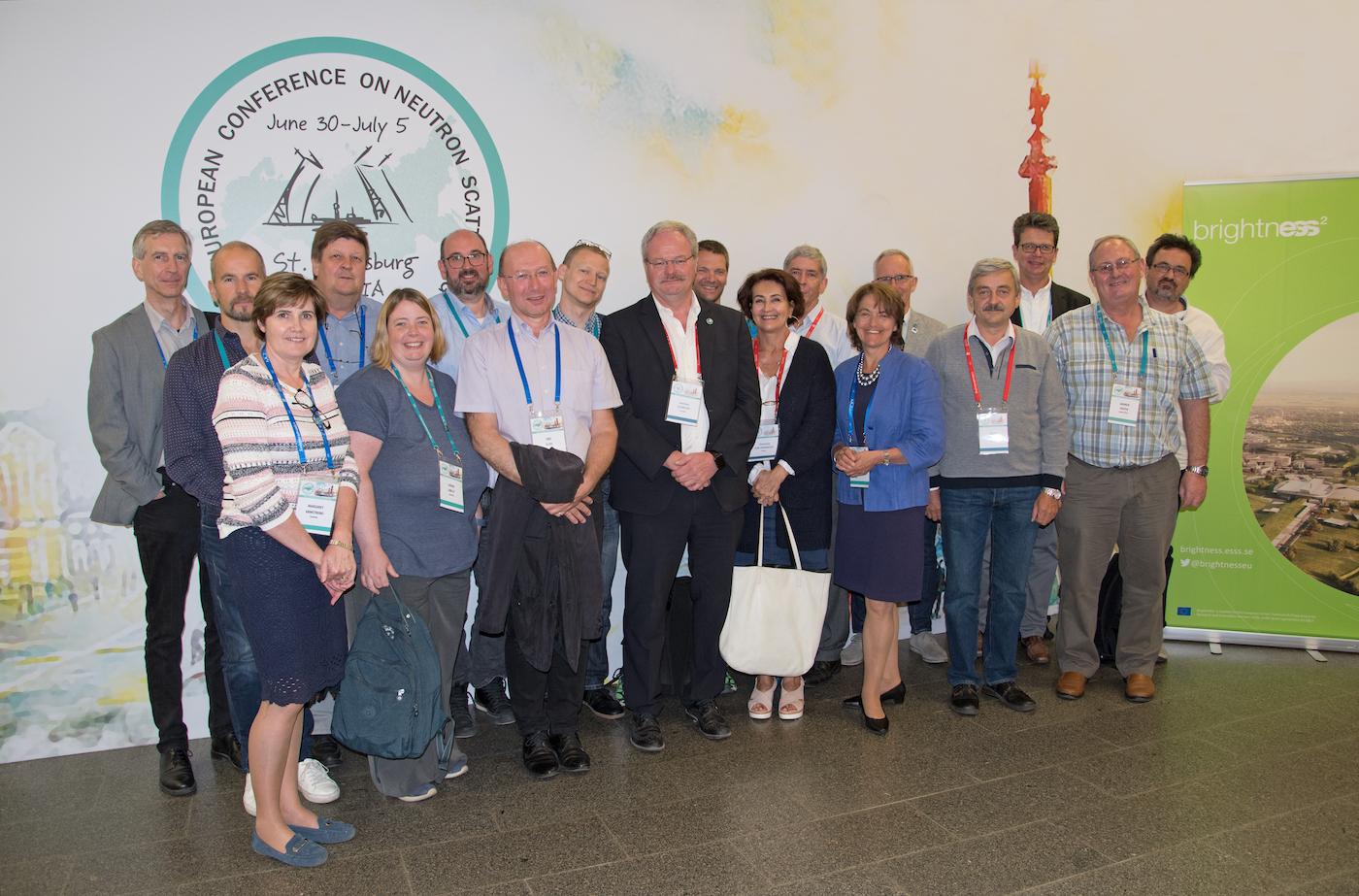BrightnESS² activities during ECNS

ST. PETERSBURG – The European Conference on Neutron Scattering (ECNS) is a spree of lectures, poster sessions, and expert talks on the current trends and future possibilities in neutron science. The programme spreads over six days and covers a magnitude of topics. If you were among the 570 participants this year, you would have heard how neutron research contributes to studies on gas turbines and batteries, food processing, ancient artefacts, protein structures and more. The variety of presentations demonstrates that neutrons are a unique tool that can be applied across numerous science and technology disciplines.
A vision for neutron science in Europe
The first ECNS was organised more than two decades ago. Since then, the conference has become a renowned platform for neutron scientists and engineers and attracts participants from all corners of Europe and beyond. Naturally, almost all partners from our project consortium were present in St. Petersburg. Taking advantage of this, Work Package 2 held a side meeting to discuss neutron vision for Europe and kick-off the related work. Taking into account global perspectives, Work Package 2 aims to define the best way to provide neutron instrumentation, characterisation methods and analytical tools to the European user community.
While the BrightnESS² activities are in full swing, the results of the project’s predecessor, BrightnESS, continue to be disseminated to special interest audiences. The young generation of engineers and scientists involved in BrightnESS between 2015-2018 travelled to ECNS to presented their posters and deliver talks on detector development for ESS and other technology highlights.
Celebrating 25 years of ENSA
The mastermind behind ECNS is the European Neutron Scattering Association (ENSA), a pan-European umbrella organisation representing users of facilities that generate neutrons for science. ENSA teamed up with the largest interdisciplinary laboratory in Russia, the National Research Centre ”Kurchatov Institute”, to organise the conference in St. Petersburg between 30 June and 5 July 2019.
The atmosphere was festive as ENSA celebrated its 25th anniversary. Since its establishment in 1984, the association has grown significantly and now brings together 7000 scientists from 21 different countries. Its members are active and accomplished. According to ENSA, the vibrant user community in Europe produces half of neutron scattering publications world-wide.
The year of 2019 has been special for ENSA not only because of the anniversary but also because the association got involved in an EU-funded project for the first time. ENSA has an active role in BrightnESS², which aims to support the long-term sustainability of neutron sources and the user community in Europe. Within the framework of Work Package 2, ENSA will provide input relative to new instrumentation, sample preparation, data analysis and modelling to assess the needs of the European science community for new neutron-based methods.
Involving South African partners
The ECNS this year hosted neutron scattering users from four different regions for the first time, namely Europe, Asia-Oceania, Africa, and America. In a plenary talk on 1 July 2019, Andrew Venter from BrightnESS² partner organisation South African Nuclear Energy Corporation (Necsa) presented a vision of neutron scattering in Africa and activities planned within the framework of the project.
Through their involvement in BrightnESS², Necsa and iThemba LABS aim to establish strategy platforms for South African researchers to become involved with international neutron landscape. Necsa and iThemba LABS are currently busy preparing a BrightnESS² workshop in Cape Town to familiarise potential new users to the existing research prospects that neutron sciences can offer. The workshop will take place between 13-14 August 2019 and its results will feed into a report on future user needs in South Africa, which will provide evidence for determining a long-term partnership with the European Spallation Source.
LENS participates in ECNS for the first time
The League of advanced European Neutron Sources (LENS) is a not-for-profit consortium formed to promote cooperation between European-level neutron infrastructure providers offering transnational user programmes to external researchers. BrightnESS² is contributing to activities carried out by LENS.
The consortium was introduced to the audience at ECNS in prime time during the opening ceremony. Vice-Chair of LENS, Robert McGreevy from ISIS Neutron and Muon Source in the United Kingdom, underlined that the neutron community has a long history of collaboration which started as a part of the European Union’s Framework Programmes in the 1980s. These programmes were extremely successful. They primarily focused on the scientific and technological developments, but also had a strong outreach component. LENS is a natural outcome of these activities.

